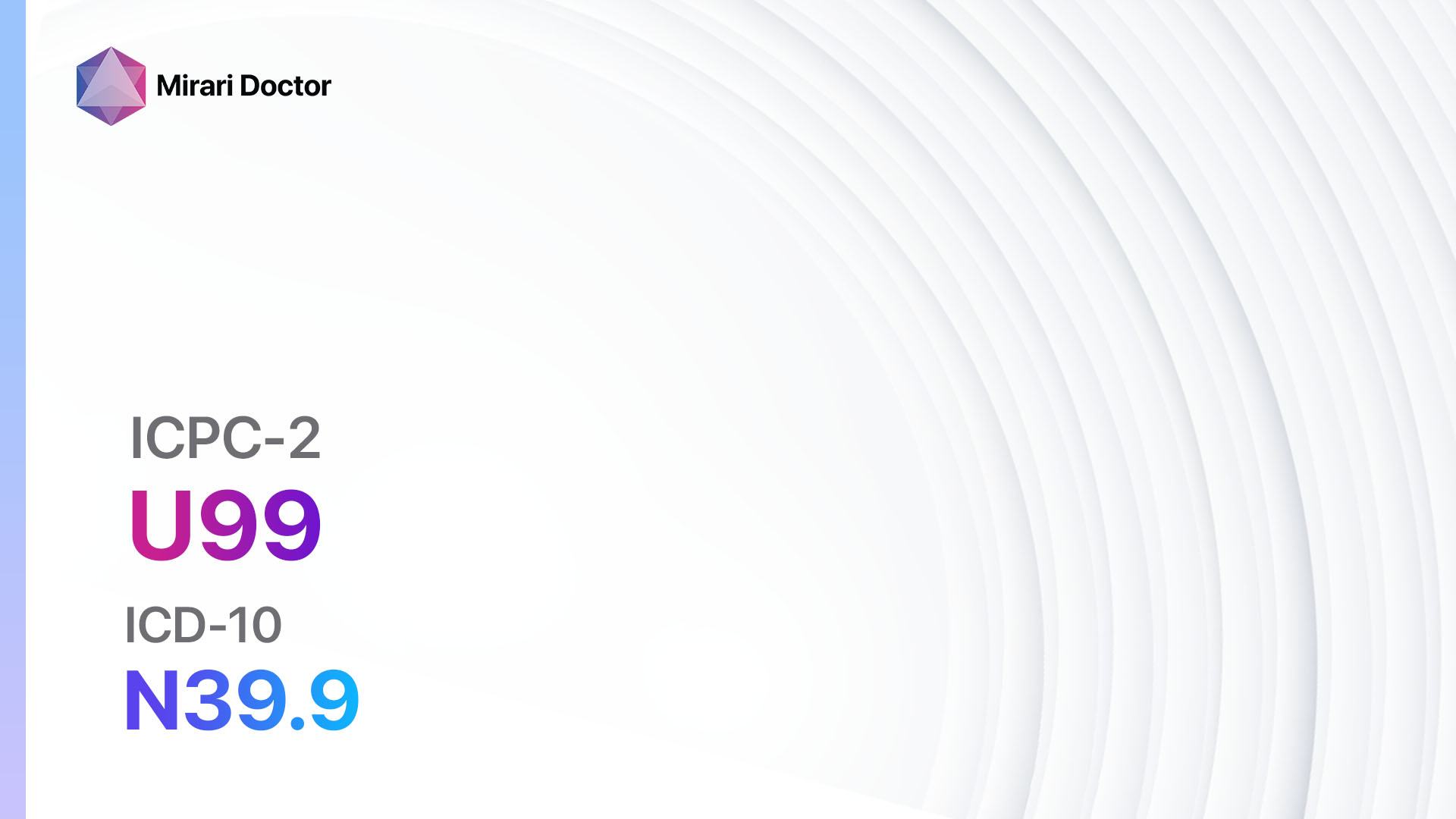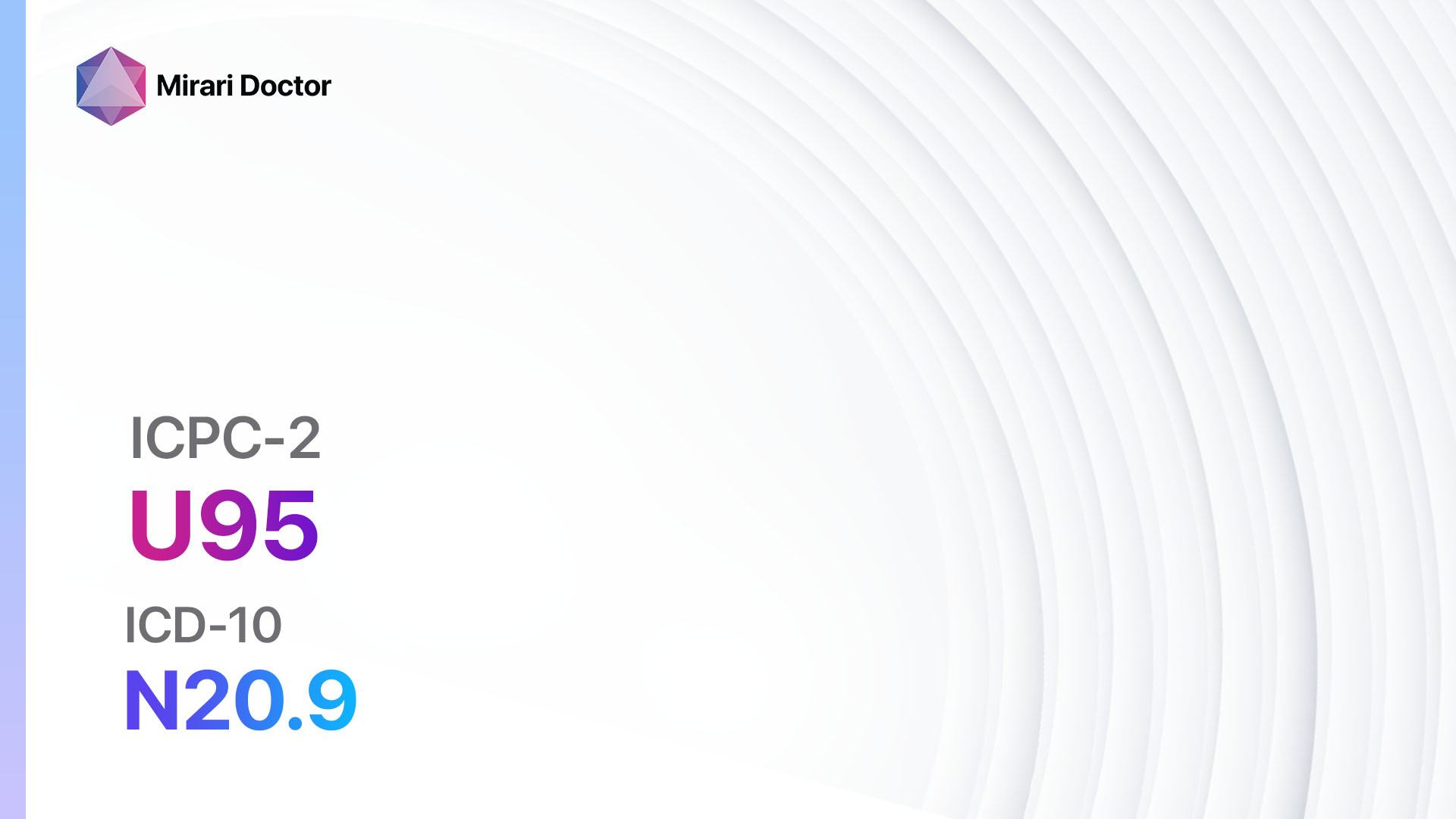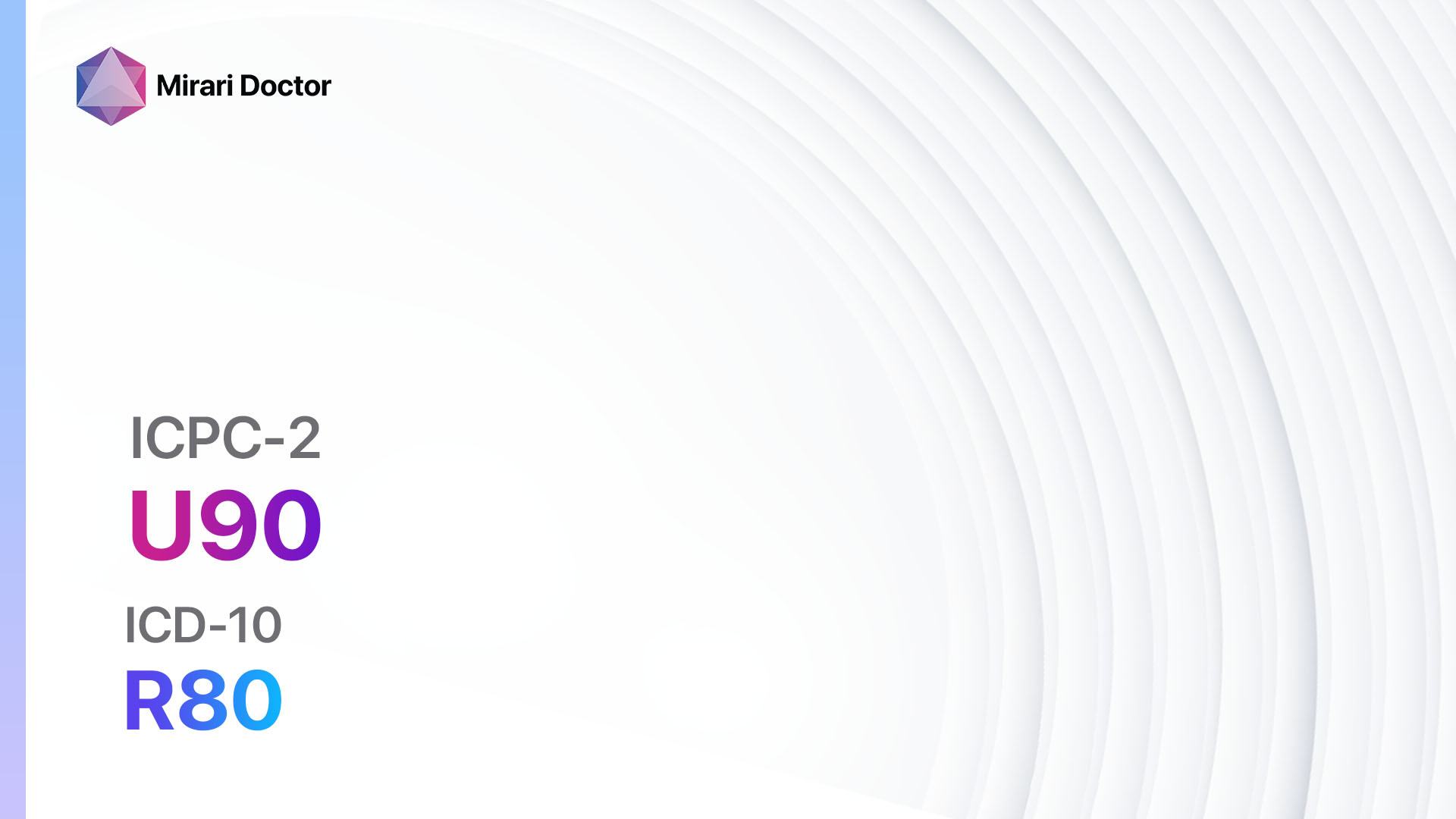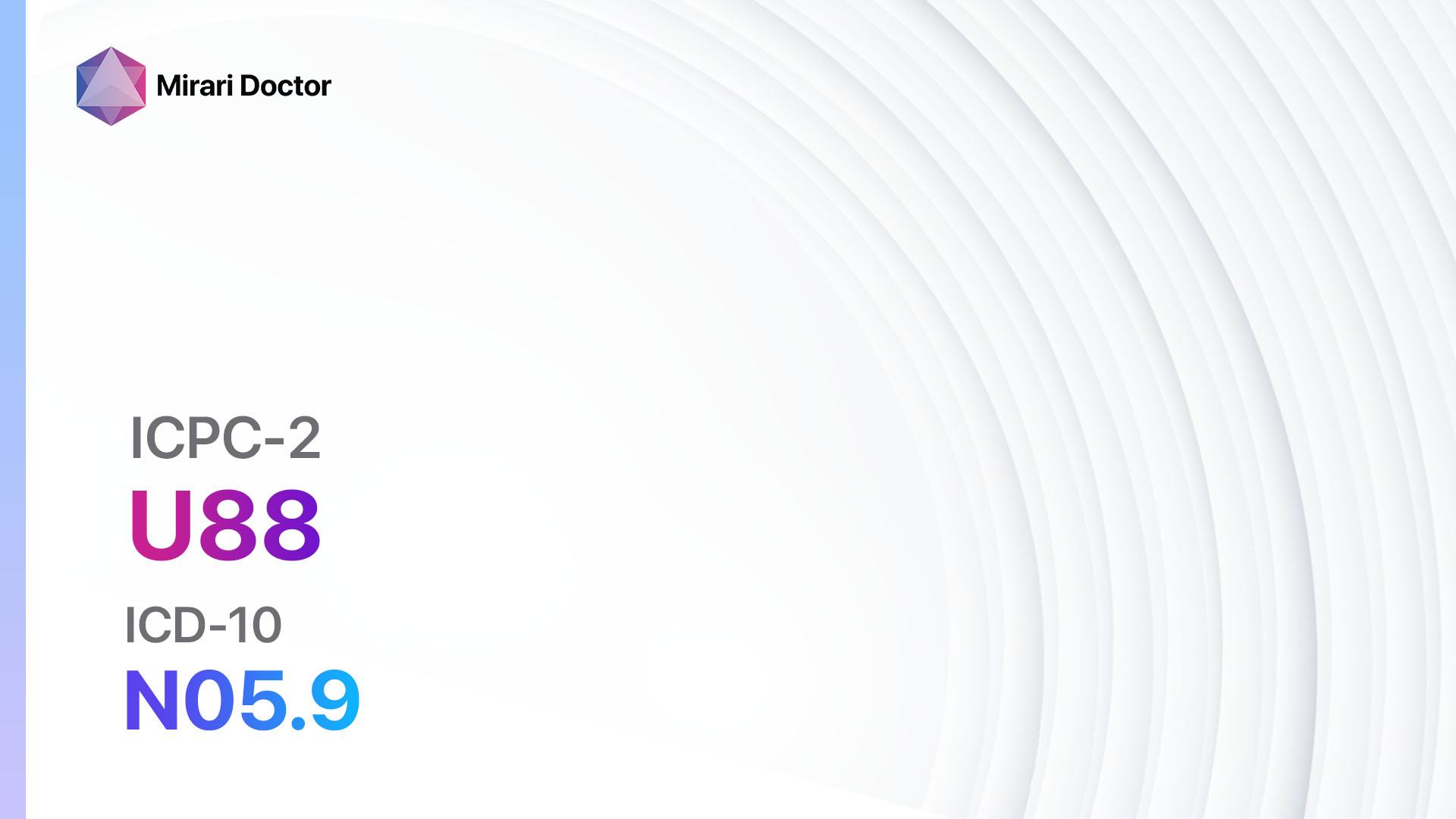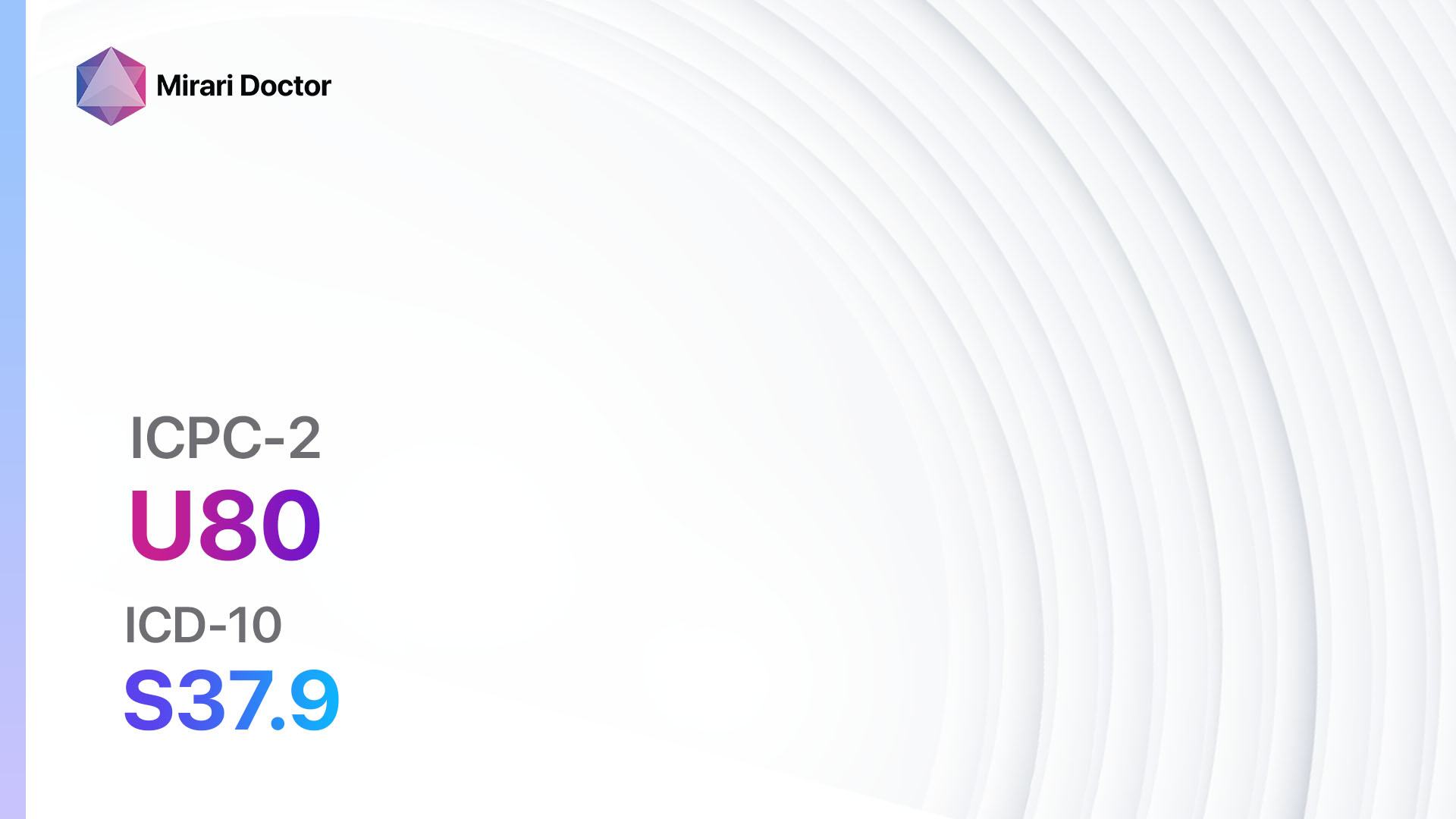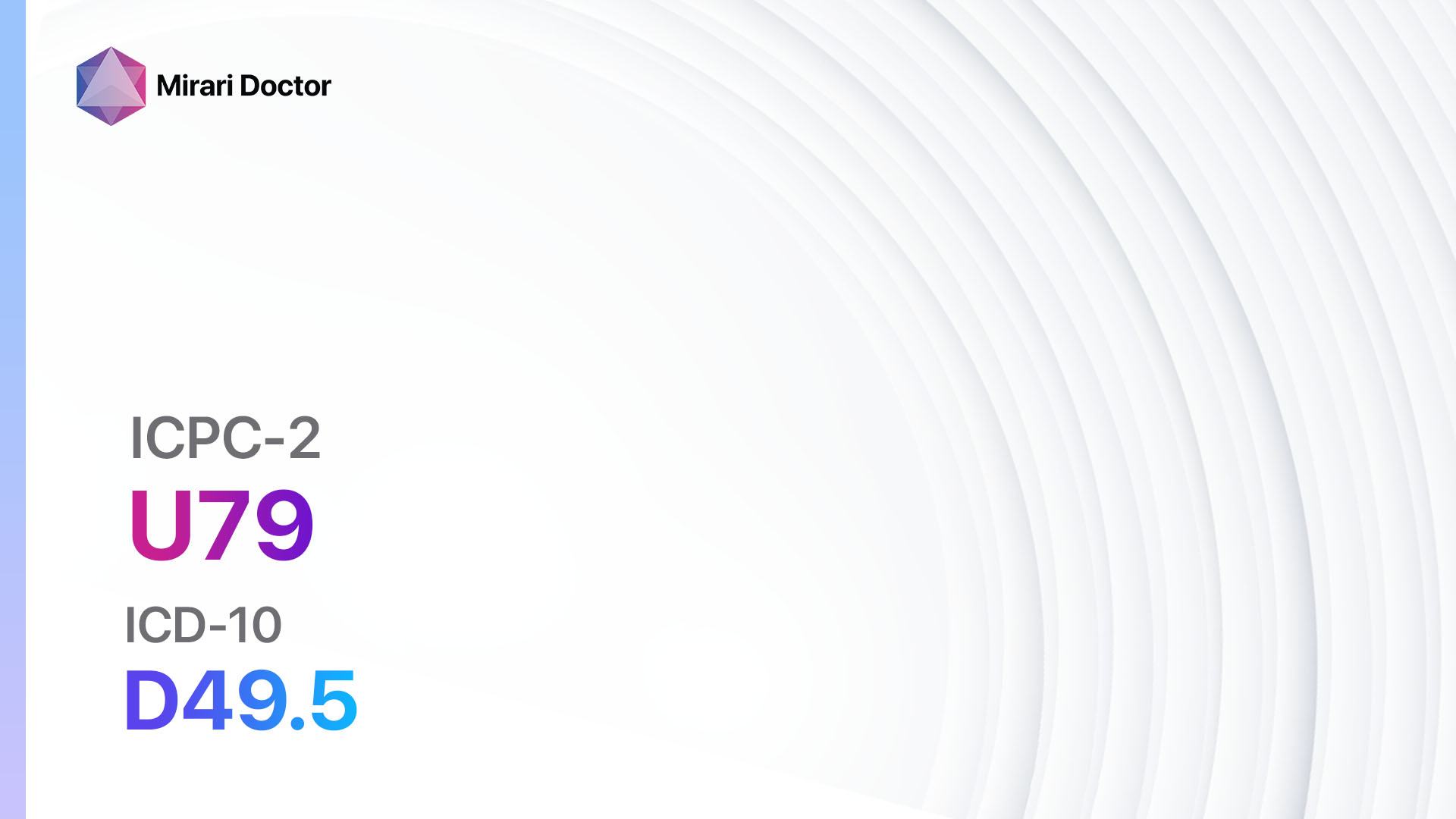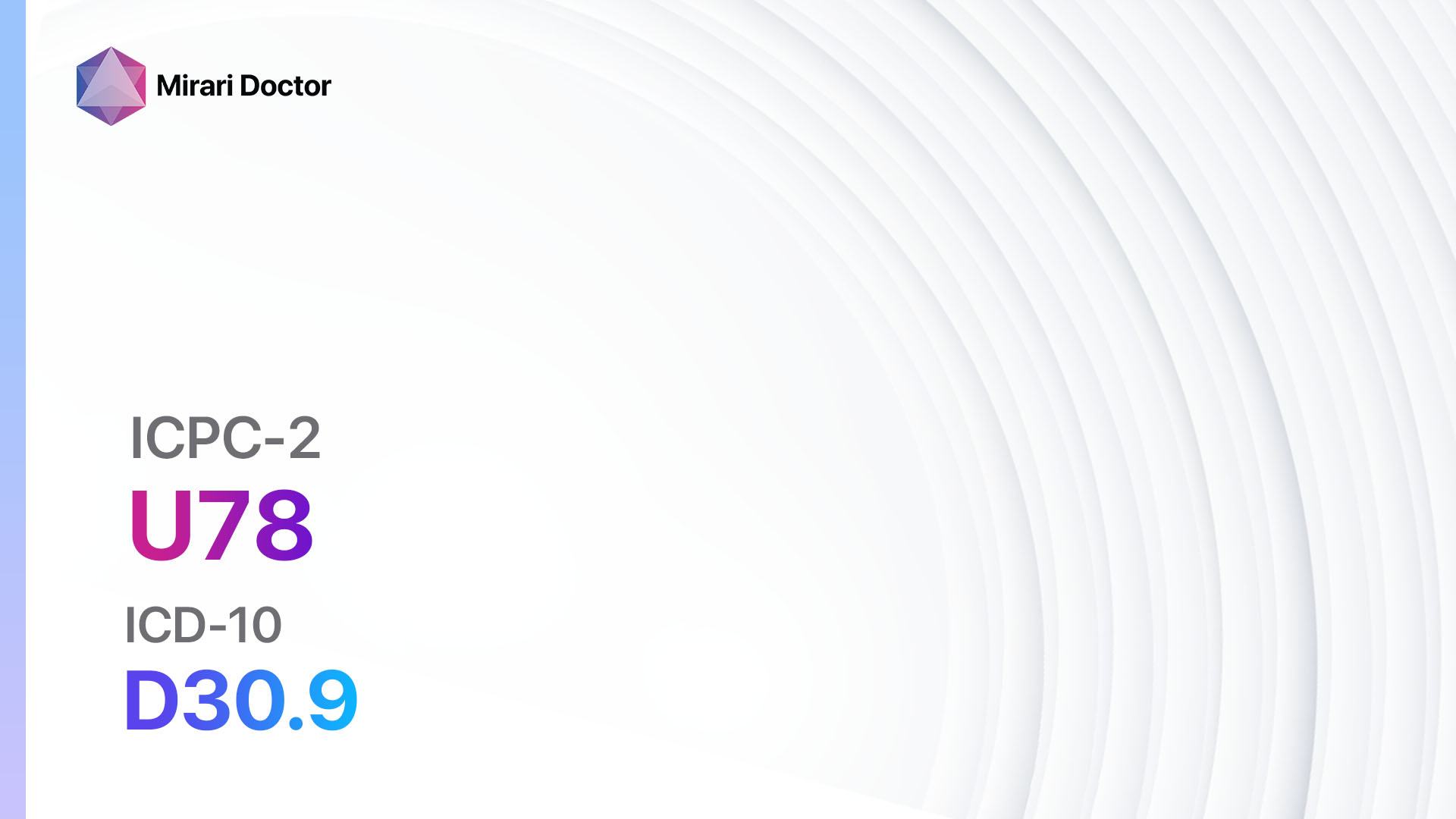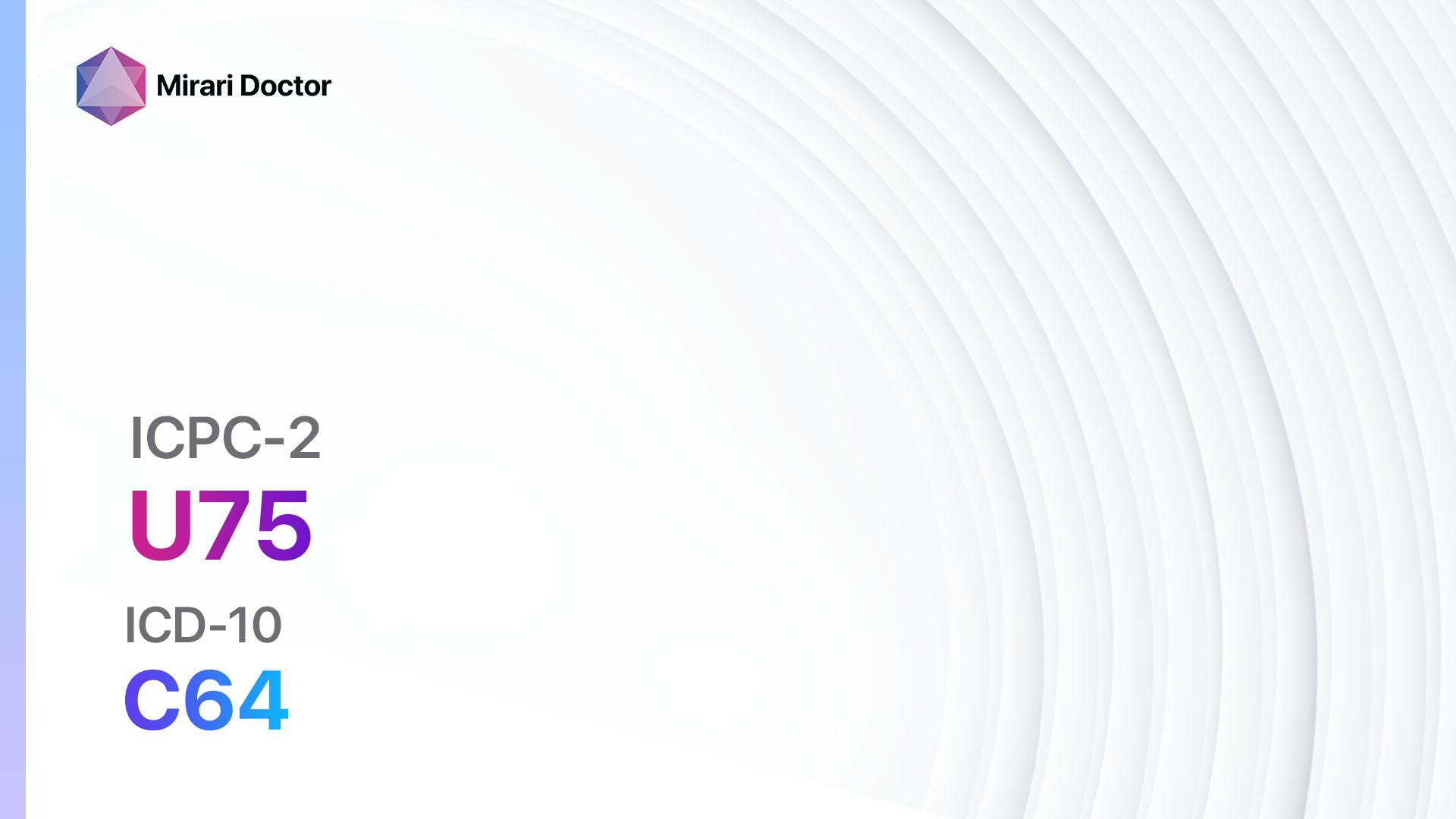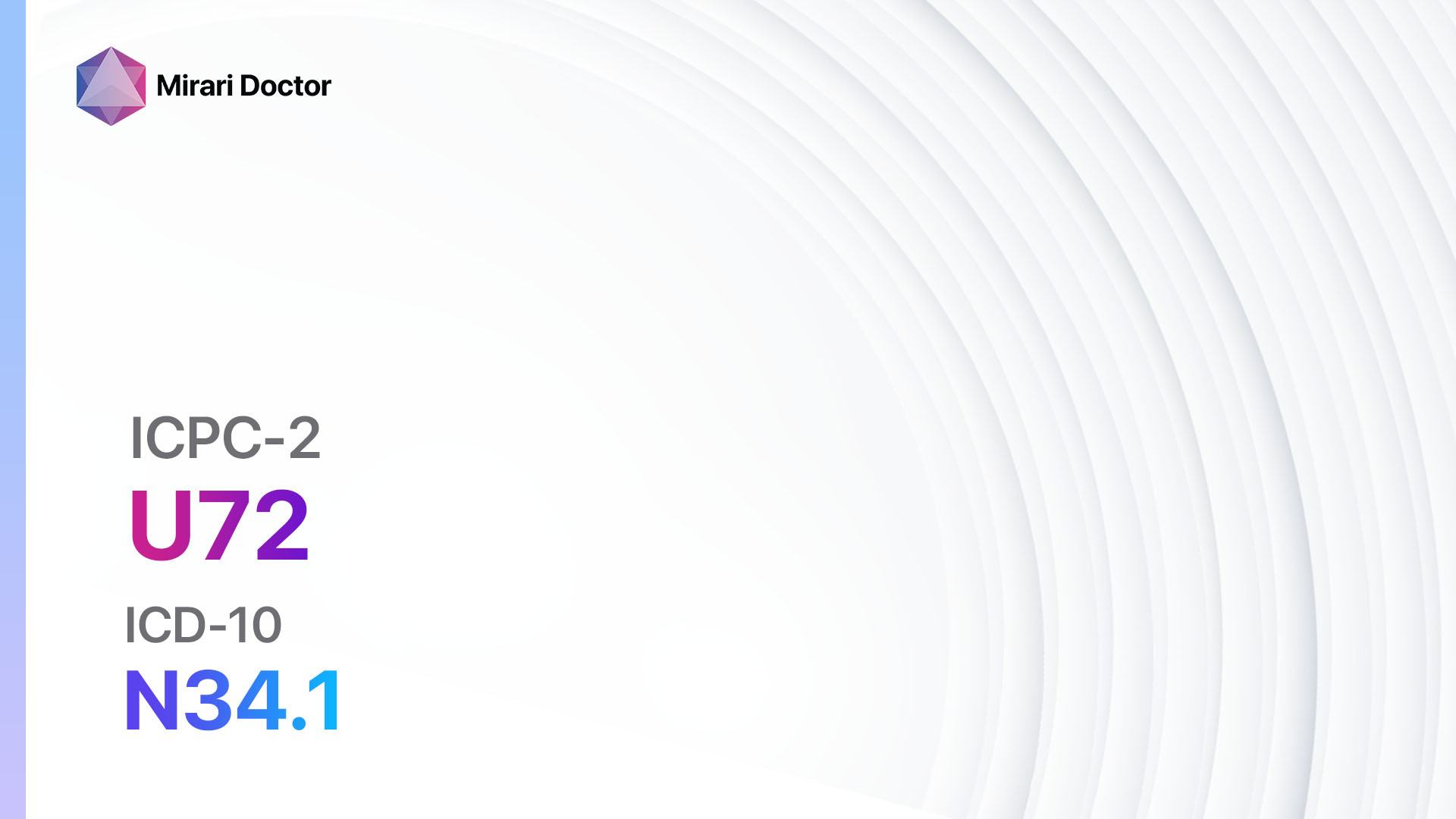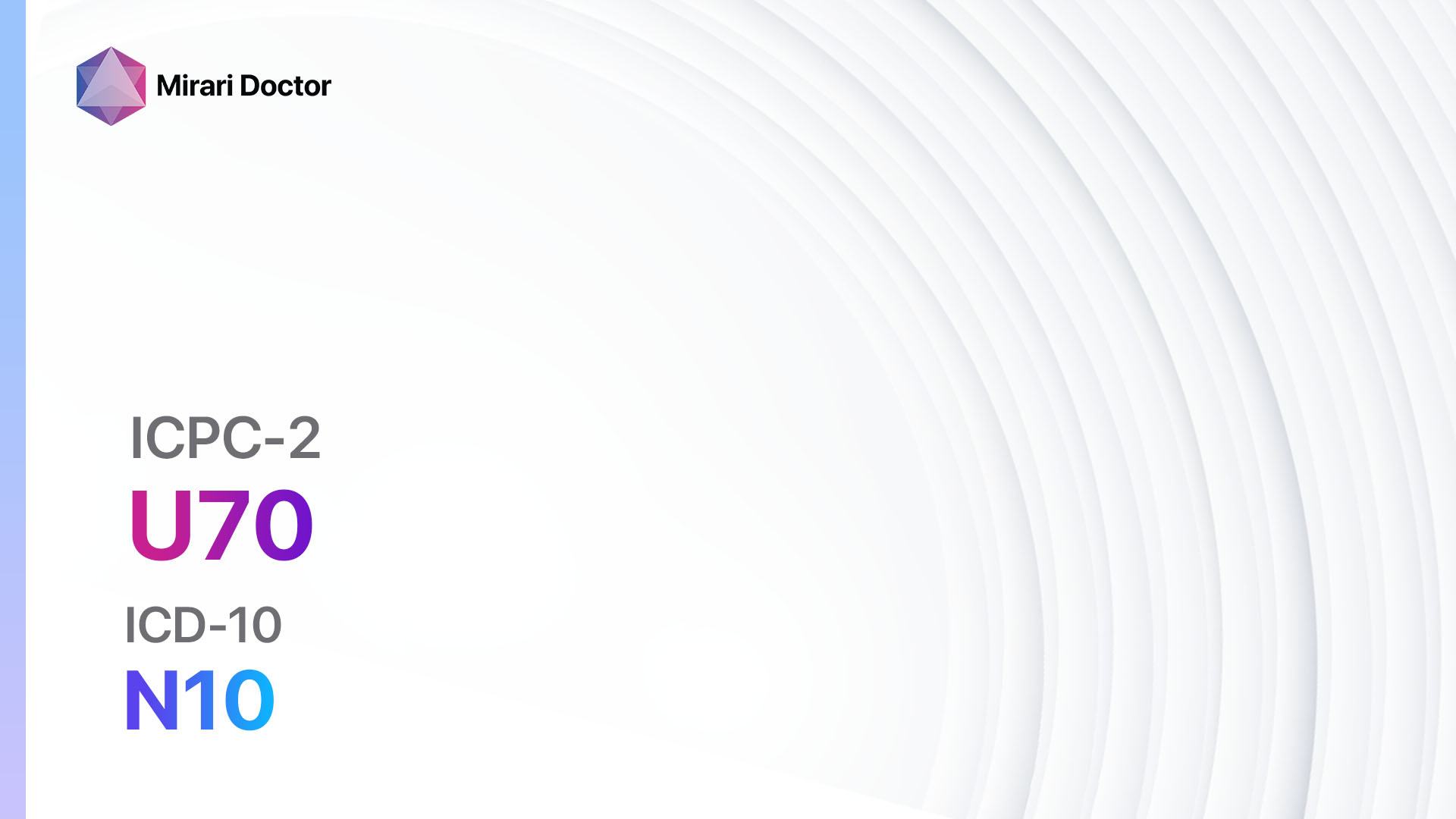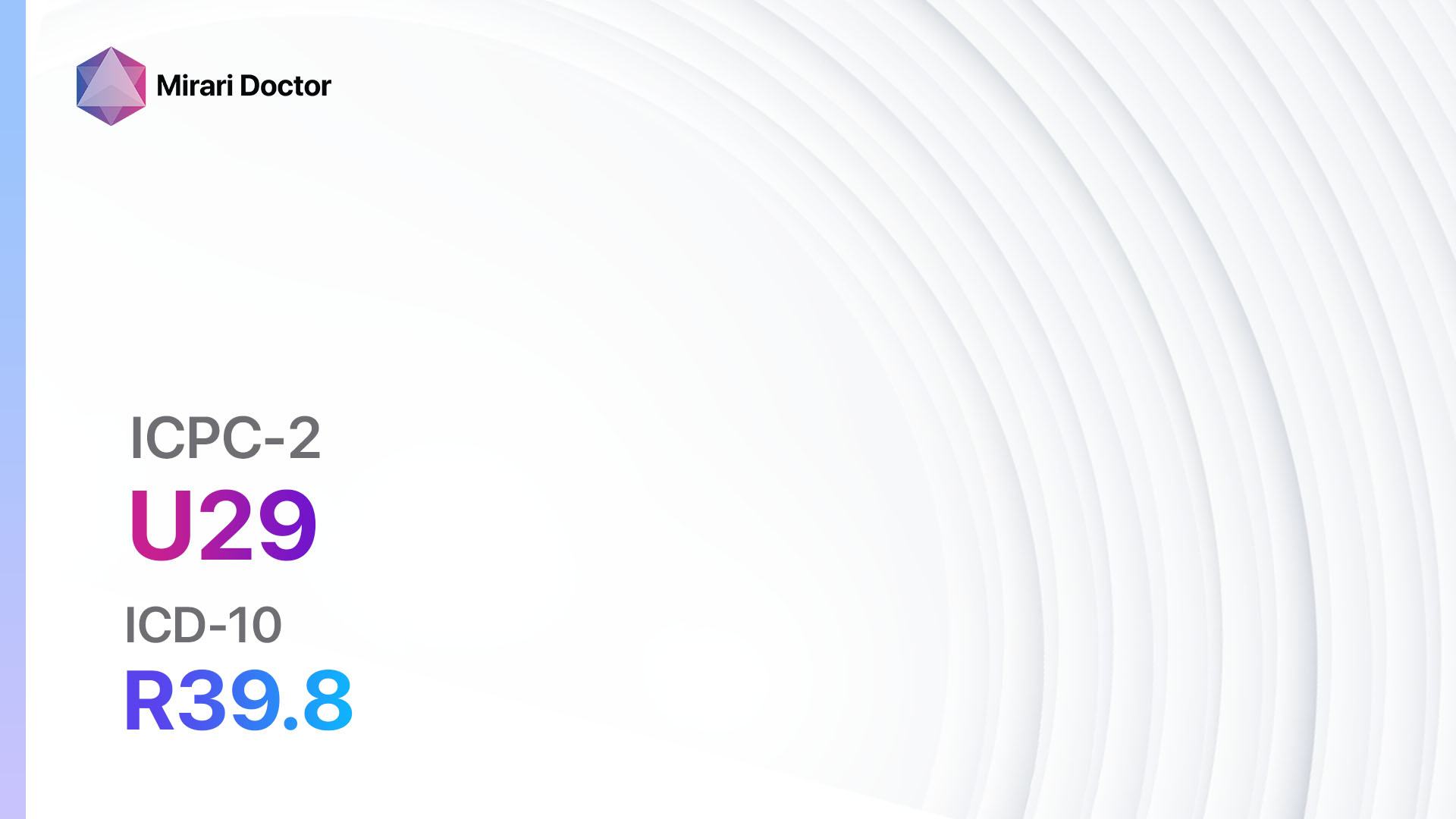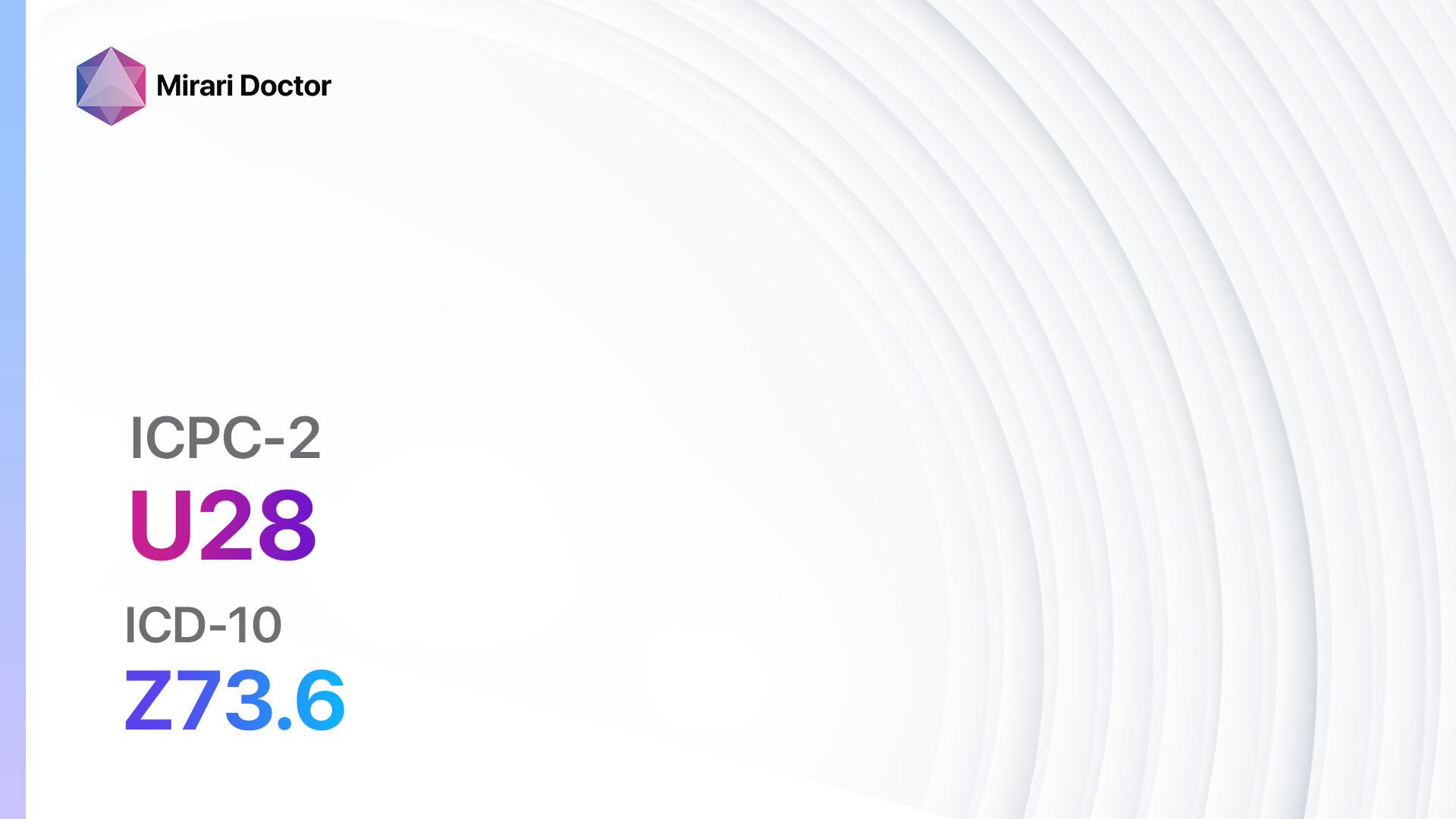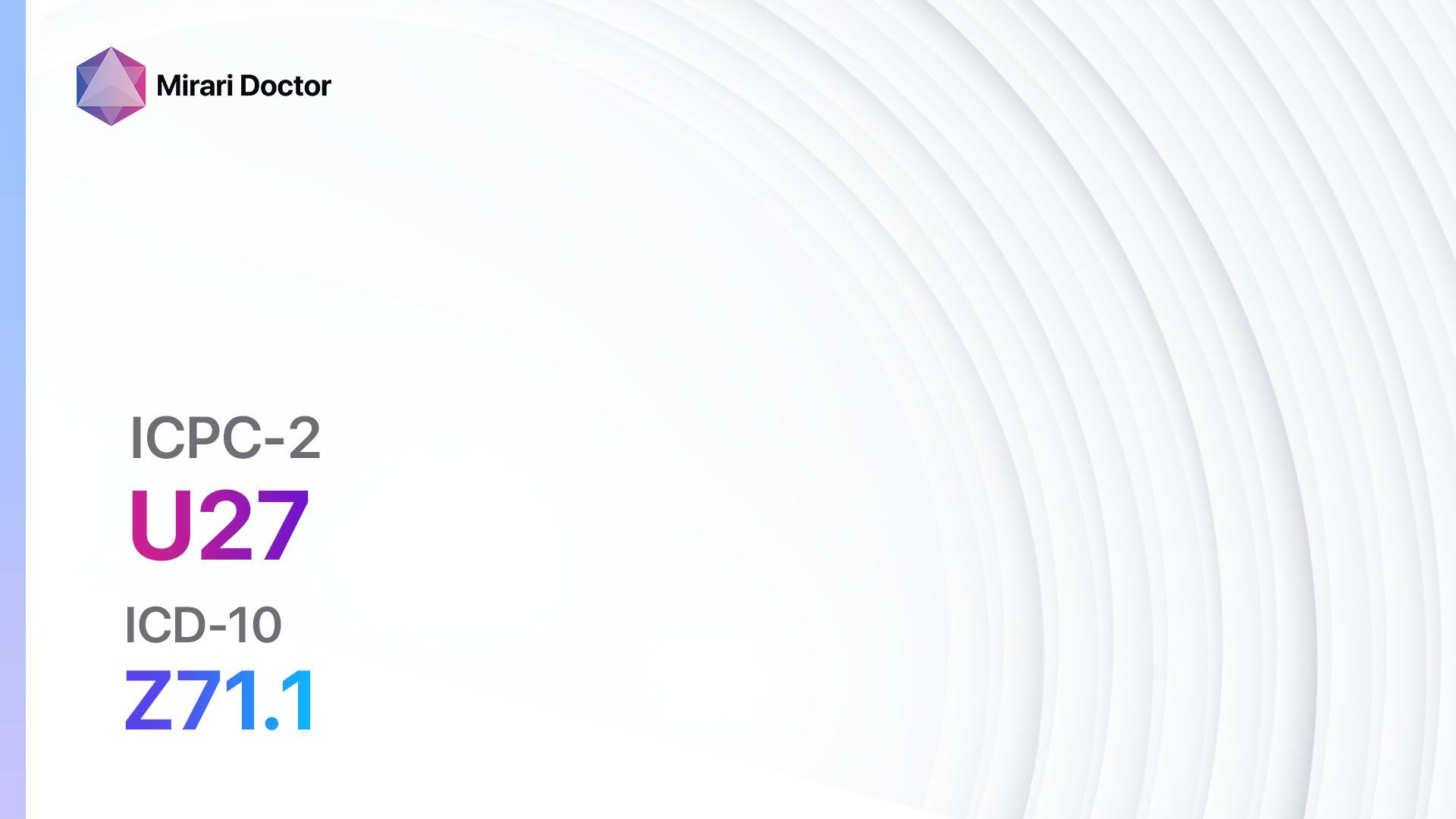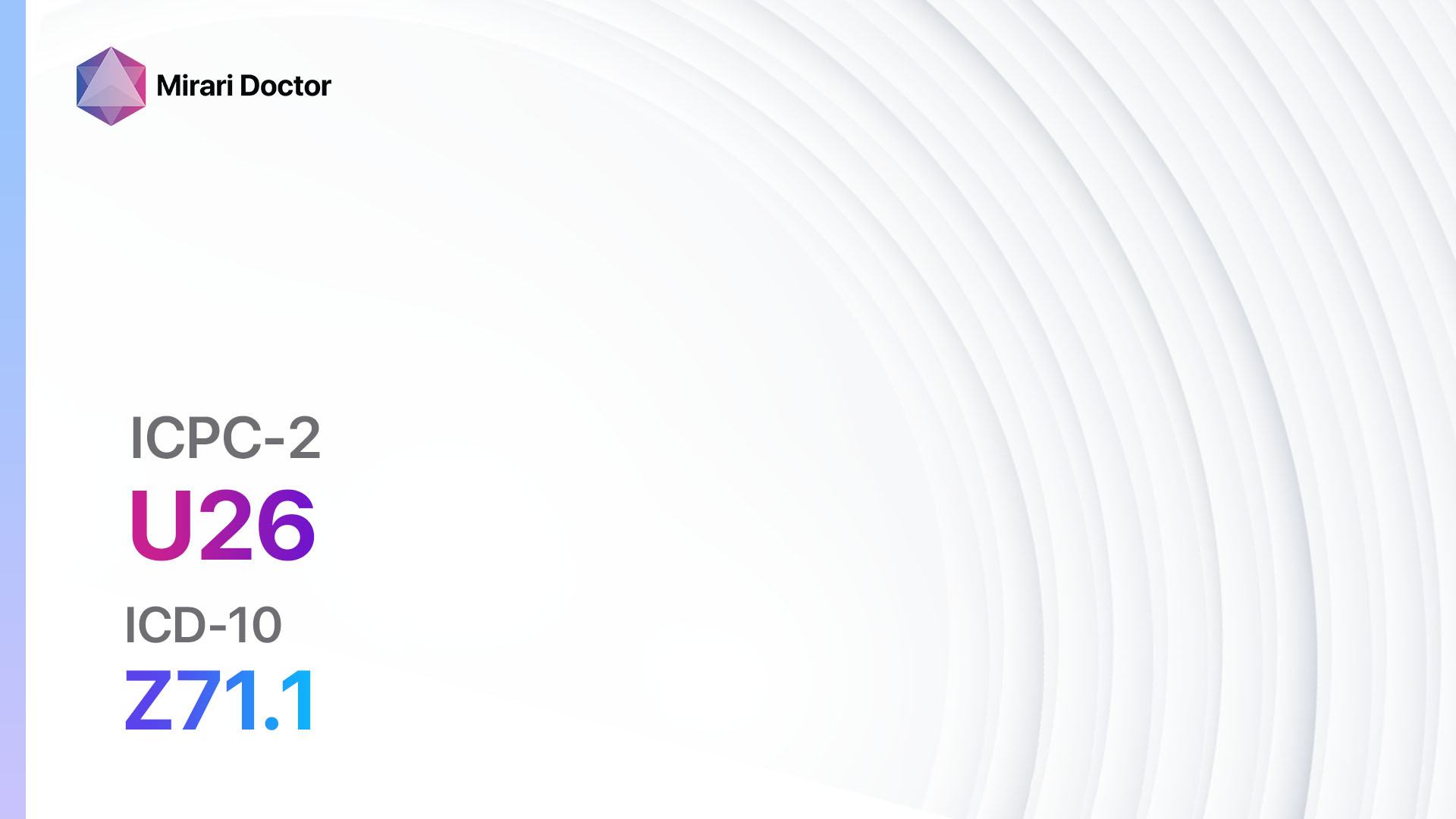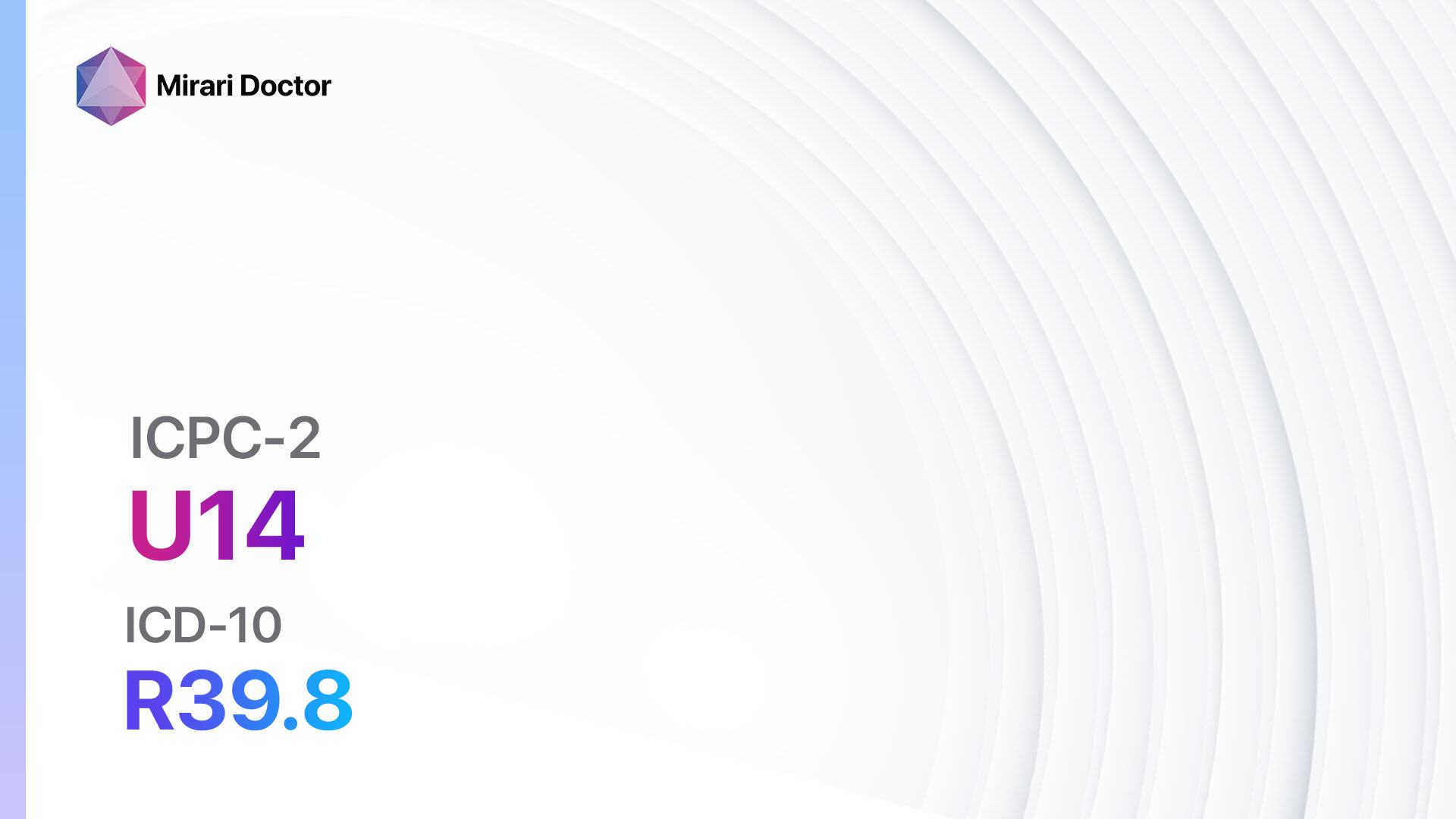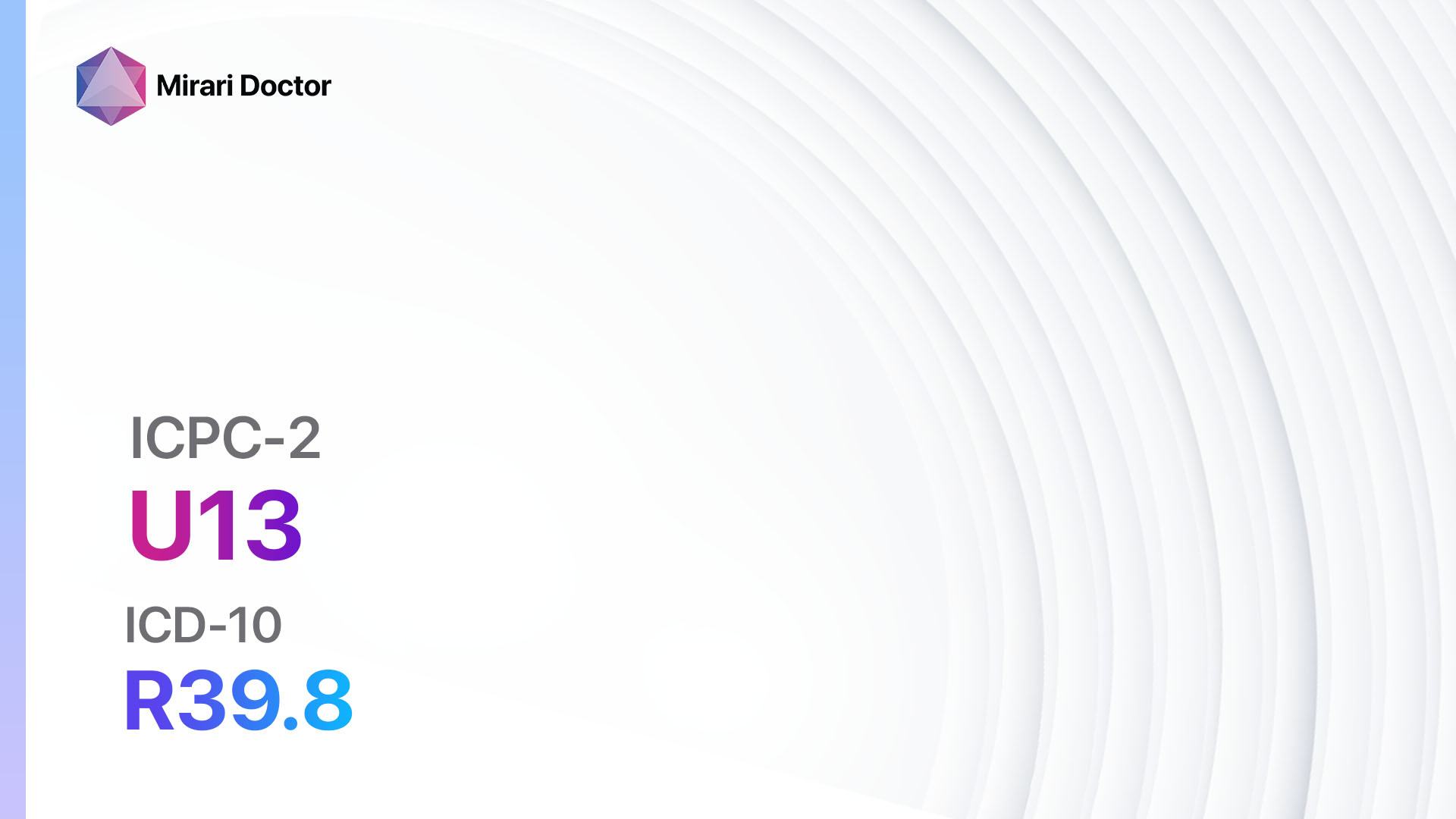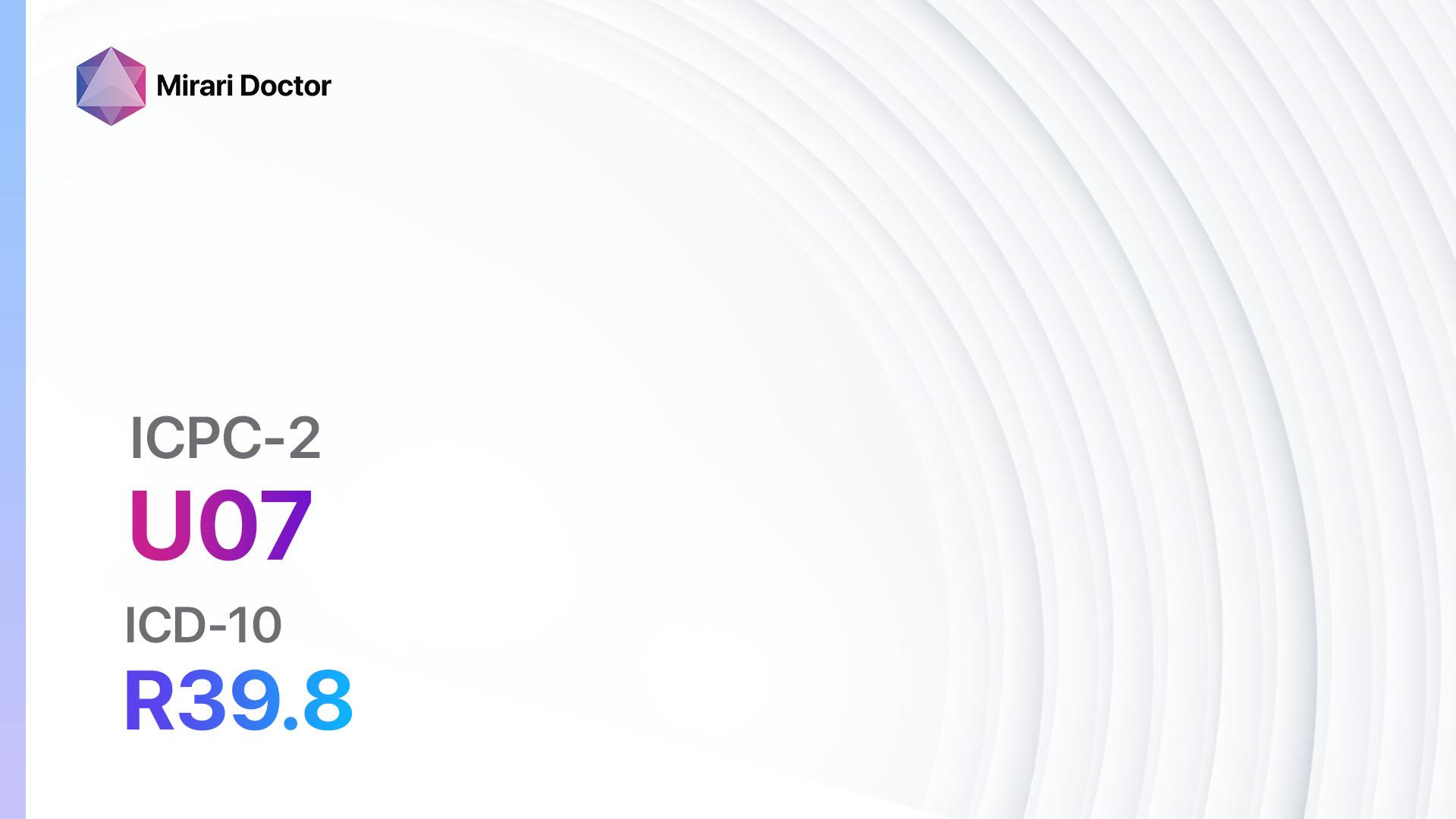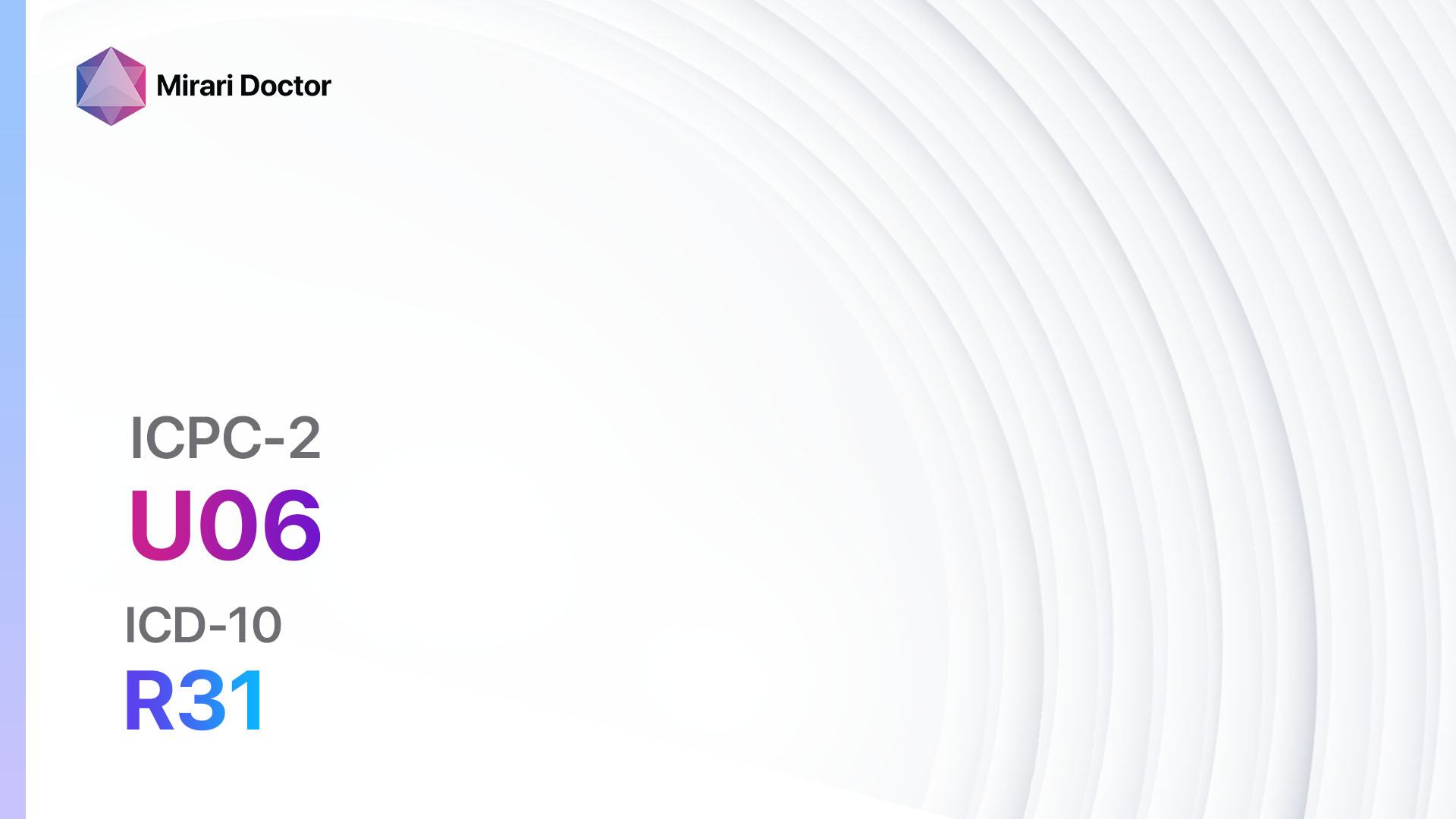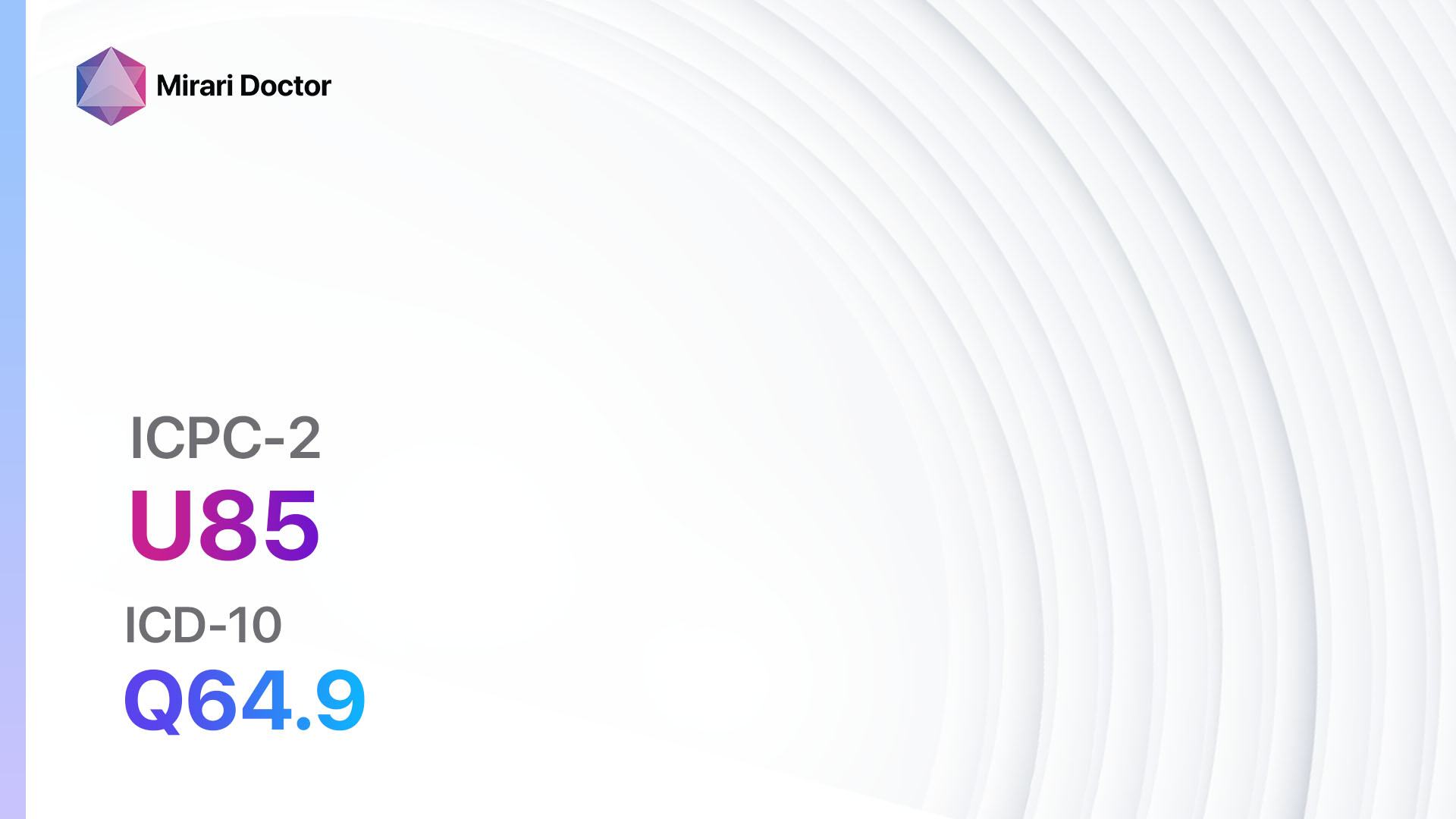
Introduction
Congenital anomaly of the urinary tract refers to structural abnormalities present at birth that affect the kidneys, ureters, bladder, or urethra. These anomalies can range from mild to severe and may lead to various urinary symptoms and complications[1]. The aim of this guide is to provide an overview of the symptoms, causes, diagnostic steps, possible interventions, and patient education for congenital anomaly of the urinary tract.
Codes
- ICPC-2 Code: U85 Congenital anomaly urinary tract[2]
- ICD-10 Code: Q64.9 Congenital malformation of urinary system, unspecified[3]
Symptoms
- Abnormal urine flow
- Frequent urinary tract infections (UTIs)
- Urinary incontinence
- Blood in the urine
- Recurrent kidney stones
- High blood pressure
- Poor growth or failure to thrive in infants[4]
Causes
- Genetic factors
- Environmental factors during pregnancy
- Maternal drug or alcohol use during pregnancy
- Exposure to certain medications or toxins during pregnancy[5]
Diagnostic Steps
Medical History
- Gather information about the patient’s symptoms, including the duration and severity.
- Ask about any family history of urinary tract abnormalities or other genetic conditions.
- Inquire about the mother’s health and any exposures during pregnancy[6].
Physical Examination
- Perform a thorough physical examination, including a genital examination in infants and children.
- Look for signs of urinary tract abnormalities, such as abnormal urine flow or swelling in the lower abdomen[7].
Laboratory Tests
- Urinalysis: To check for the presence of blood, infection, or other abnormalities in the urine.
- Complete blood count (CBC): To evaluate for signs of infection or anemia.
- Renal function tests: To assess kidney function and detect any abnormalities.
- Genetic testing: In some cases, genetic testing may be recommended to identify specific genetic abnormalities associated with urinary tract anomalies[8].
Diagnostic Imaging
- Renal ultrasound: To visualize the kidneys and assess their size, shape, and position.
- Voiding cystourethrogram (VCUG): A special X-ray procedure to evaluate the bladder and urethra during urination.
- Magnetic resonance imaging (MRI): To obtain detailed images of the urinary tract structures.
- Computed tomography (CT) scan: To provide cross-sectional images of the urinary tract[9].
Other Tests
- Nuclear medicine scans: These tests use a small amount of radioactive material to evaluate kidney function and drainage.
- Cystoscopy: A procedure that involves inserting a thin tube with a camera into the urethra and bladder to visualize the structures[10].
Follow-up and Patient Education
- Schedule regular follow-up appointments to monitor the condition and assess treatment effectiveness.
- Educate the patient and their family about the condition, its management, and potential complications.
- Provide resources for support groups or counseling services, if needed[1].
Possible Interventions
Traditional Interventions
Medications:
Top 5 drugs for Congenital anomaly urinary tract:
- Antibiotics (e.g., Amoxicillin, Trimethoprim-sulfamethoxazole):
- Cost: Generic versions can be $3-$50/month.
- Contraindications: Allergy to the specific antibiotic.
- Side effects: Upset stomach, diarrhea, allergic reactions.
- Severe side effects: Severe allergic reactions, Clostridium difficile infection.
- Drug interactions: Warfarin, methotrexate.
- Warning: Complete the full course of antibiotics as prescribed.
- Anticholinergic medications (e.g., Oxybutynin, Tolterodine):
- Cost: Generic versions can be $10-$50/month.
- Contraindications: Glaucoma, urinary retention, gastrointestinal obstruction.
- Side effects: Dry mouth, constipation, blurred vision.
- Severe side effects: Urinary retention, confusion.
- Drug interactions: Other anticholinergic medications.
- Warning: Avoid activities that require mental alertness until the effects are known.
- Alpha-blockers (e.g., Tamsulosin, Terazosin):
- Cost: Generic versions can be $10-$50/month.
- Contraindications: Hypotension, severe liver disease.
- Side effects: Dizziness, headache, nasal congestion.
- Severe side effects: Fainting, priapism.
- Drug interactions: Other alpha-blockers, nitrates.
- Warning: Take the medication at bedtime to minimize dizziness.
- Diuretics (e.g., Furosemide, Hydrochlorothiazide):
- Cost: Generic versions can be $3-$20/month.
- Contraindications: Severe electrolyte imbalance, anuria.
- Side effects: Increased urination, electrolyte imbalances.
- Severe side effects: Dehydration, kidney damage.
- Drug interactions: Nonsteroidal anti-inflammatory drugs (NSAIDs), lithium.
- Warning: Monitor electrolyte levels regularly.
- Pain medications (e.g., Acetaminophen, Ibuprofen):
- Cost: Generic versions can be $3-$10/month.
- Contraindications: Allergy to the specific pain medication.
- Side effects: Upset stomach, drowsiness, allergic reactions.
- Severe side effects: Liver damage, gastrointestinal bleeding.
- Drug interactions: Other pain medications, blood thinners.
- Warning: Follow the recommended dosage and duration of use.
Alternative Drugs:
- Botulinum toxin injections: Used in cases of urinary incontinence or overactive bladder. Cost: $500-$1500 per injection.
- Hormone therapy: May be considered in certain cases to address hormonal imbalances. Cost: Varies depending on the specific hormone therapy.
- Surgical Procedures: In some cases, surgical intervention may be necessary to correct structural abnormalities or improve urinary function. Cost: Varies depending on the specific procedure.
Alternative Interventions
- Acupuncture: May help improve urinary symptoms and overall well-being. Cost: $60-$120 per session.
- Herbal supplements: Some herbal supplements, such as cranberry extract or dandelion root, may have potential benefits for urinary health. Cost: Varies depending on the specific supplement.
- Physical therapy: Pelvic floor exercises and other physical therapy techniques may help improve urinary control. Cost: $50-$150 per session.
- Biofeedback: A technique that helps individuals gain control over certain bodily functions, such as bladder control. Cost: $75-$200 per session.
- Nutritional counseling: A registered dietitian can provide guidance on dietary modifications that may help manage urinary symptoms. Cost: $100-$200 per session.
Lifestyle Interventions
- Fluid management: Encourage the patient to maintain adequate hydration while avoiding excessive fluid intake.
- Bladder training: Teach the patient techniques to improve bladder control and reduce urinary urgency.
- Dietary modifications: Recommend a balanced diet that includes foods rich in fiber and low in irritants, such as caffeine and spicy foods.
- Regular exercise: Encourage regular physical activity to promote overall health and improve urinary function.
- Stress management: Help the patient develop coping strategies to manage stress, as stress can exacerbate urinary symptoms.
It is important to note that the cost ranges provided are approximate and may vary depending on the location and availability of the interventions.
Mirari Cold Plasma Alternative Intervention
Understanding Mirari Cold Plasma
- Safe and Non-Invasive Treatment: Mirari Cold Plasma is a safe and non-invasive treatment option for various skin conditions. It does not require incisions, minimizing the risk of scarring, bleeding, or tissue damage.
- Efficient Extraction of Foreign Bodies: Mirari Cold Plasma facilitates the removal of foreign bodies from the skin by degrading and dissociating organic matter, allowing easier access and extraction.
- Pain Reduction and Comfort: Mirari Cold Plasma has a local analgesic effect, providing pain relief during the treatment, making it more comfortable for the patient.
- Reduced Risk of Infection: Mirari Cold Plasma has antimicrobial properties, effectively killing bacteria and reducing the risk of infection.
- Accelerated Healing and Minimal Scarring: Mirari Cold Plasma stimulates wound healing and tissue regeneration, reducing healing time and minimizing the formation of scars.
Mirari Cold Plasma Prescription
Video instructions for using Mirari Cold Plasma Device – U85 Congenital anomaly urinary tract (ICD-10:Q64.9)
| Mild | Moderate | Severe |
| Mode setting: 1 (Infection) Location: 0 (Localized) Morning: 15 minutes, Evening: 15 minutes |
Mode setting: 1 (Infection) Location: 0 (Localized) Morning: 30 minutes, Lunch: 30 minutes, Evening: 30 minutes |
Mode setting: 1 (Infection) Location: 0 (Localized) Morning: 30 minutes, Lunch: 30 minutes, Evening: 30 minutes |
| Mode setting: 6 (Liver/Kidney Therapy) Location: 2 (Prostate & Uterus) Morning: 15 minutes, Evening: 15 minutes |
Mode setting: 6 (Liver/Kidney Therapy) Location: 2 (Prostate & Uterus) Morning: 30 minutes, Lunch: 30 minutes, Evening: 30 minutes |
Mode setting: 6 (Liver/Kidney Therapy) Location: 2 (Prostate & Uterus) Morning: 30 minutes, Lunch: 30 minutes, Evening: 30 minutes |
| Mode setting: 6 (Liver/Kidney Therapy) Location: 3 (Kidney, Liver & Spleen) Morning: 15 minutes, Evening: 15 minutes |
Mode setting: 6 (Liver/Kidney Therapy) Location: 3 (Kidney, Liver & Spleen) Morning: 30 minutes, Lunch: 30 minutes, Evening: 30 minutes |
Mode setting: 6 (Liver/Kidney Therapy) Location: 3 (Kidney, Liver & Spleen) Morning: 30 minutes, Lunch: 30 minutes, Evening: 30 minutes |
| Mode setting: 7 (Immunotherapy) Location: 1 (Sacrum) Morning: 15 minutes, Evening: 15 minutes |
Mode setting: 7 (Immunotherapy) Location: 1 (Sacrum) Morning: 30 minutes, Lunch: 30 minutes, Evening: 30 minutes |
Mode setting: 7 (Immunotherapy) Location: 1 (Sacrum) Morning: 30 minutes, Lunch: 30 minutes, Evening: 30 minutes |
| Total Morning: 60 minutes approx. $10 USD, Evening: 60 minutes approx. $10 USD |
Total Morning: 120 minutes approx. $20 USD, Lunch: 120 minutes approx. $20 USD, Evening: 120 minutes approx. $20 USD, |
Total Morning: 120 minutes approx. $20 USD, Lunch: 120 minutes approx. $20 USD, Evening: 120 minutes approx. $20 USD, |
| Usual treatment for 7-60 days approx. $140 USD – $1200 USD | Usual treatment for 6-8 weeks approx. $2,520 USD – $3,360 USD |
Usual treatment for 3-6 months approx. $5,400 USD – $10,800 USD
|
 |
|
Use the Mirari Cold Plasma device to treat Congenital anomaly urinary tract effectively.
WARNING: MIRARI COLD PLASMA IS DESIGNED FOR THE HUMAN BODY WITHOUT ANY ARTIFICIAL OR THIRD PARTY PRODUCTS. USE OF OTHER PRODUCTS IN COMBINATION WITH MIRARI COLD PLASMA MAY CAUSE UNPREDICTABLE EFFECTS, HARM OR INJURY. PLEASE CONSULT A MEDICAL PROFESSIONAL BEFORE COMBINING ANY OTHER PRODUCTS WITH USE OF MIRARI.
Step 1: Cleanse the Skin
- Start by cleaning the affected area of the skin with a gentle cleanser or mild soap and water. Gently pat the area dry with a clean towel.
Step 2: Prepare the Mirari Cold Plasma device
- Ensure that the Mirari Cold Plasma device is fully charged or has fresh batteries as per the manufacturer’s instructions. Make sure the device is clean and in good working condition.
- Switch on the Mirari device using the power button or by following the specific instructions provided with the device.
- Some Mirari devices may have adjustable settings for intensity or treatment duration. Follow the manufacturer’s instructions to select the appropriate settings based on your needs and the recommended guidelines.
Step 3: Apply the Device
- Place the Mirari device in direct contact with the affected area of the skin. Gently glide or hold the device over the skin surface, ensuring even coverage of the area experiencing.
- Slowly move the Mirari device in a circular motion or follow a specific pattern as indicated in the user manual. This helps ensure thorough treatment coverage.
Step 4: Monitor and Assess:
- Keep track of your progress and evaluate the effectiveness of the Mirari device in managing your Congenital anomaly urinary tract. If you have any concerns or notice any adverse reactions, consult with your health care professional.
Note
This guide is for informational purposes only and should not replace the advice of a medical professional. Always consult with your healthcare provider or a qualified medical professional for personal advice, diagnosis, or treatment. Do not solely rely on the information presented here for decisions about your health. Use of this information is at your own risk. The authors of this guide, nor any associated entities or platforms, are not responsible for any potential adverse effects or outcomes based on the content.
Mirari Cold Plasma System Disclaimer
- Purpose: The Mirari Cold Plasma System is a Class 2 medical device designed for use by trained healthcare professionals. It is registered for use in Thailand and Vietnam. It is not intended for use outside of these locations.
- Informational Use: The content and information provided with the device are for educational and informational purposes only. They are not a substitute for professional medical advice or care.
- Variable Outcomes: While the device is approved for specific uses, individual outcomes can differ. We do not assert or guarantee specific medical outcomes.
- Consultation: Prior to utilizing the device or making decisions based on its content, it is essential to consult with a Certified Mirari Tele-Therapist and your medical healthcare provider regarding specific protocols.
- Liability: By using this device, users are acknowledging and accepting all potential risks. Neither the manufacturer nor the distributor will be held accountable for any adverse reactions, injuries, or damages stemming from its use.
- Geographical Availability: This device has received approval for designated purposes by the Thai and Vietnam FDA. As of now, outside of Thailand and Vietnam, the Mirari Cold Plasma System is not available for purchase or use.
References
- Lange-Sperandio B, et al. Congenital Anomalies of the Kidney and Urinary Tract: A Continuum of Care. Seminars in Nephrology. 2023;43(5):551-563.
- ICPC-2e-v6.0. International Classification of Primary Care, 2nd edition.
- ICD-10 Version:2019. World Health Organization.
- Stonebrook E, et al. Congenital Anomalies of the Kidney and Urinary Tract: A Clinical Review. Pediatric Nephrology. 2020;35(5):753-761.
- Nicolaou N, et al. Genetic, environmental, and epigenetic factors involved in CAKUT. Nature Reviews Nephrology. 2015;11(12):720-731.
- Chevalier RL. Congenital Anomalies of the Kidneys and Urinary Tract. NeoReviews. 2019;20(5):e280-e289.
- Rabinowitz R. Bladder Anomalies. MSD Manual Professional Edition. 2023.
- Vivante A, et al. Single-gene causes of congenital anomalies of the kidney and urinary tract (CAKUT) in humans. Pediatric Nephrology. 2014;29(4):695-704.
- Morey AF, et al. Urotrauma: AUA guideline. Journal of Urology. 2014;192(2):327-335.
- Summerton DJ, et al. EAU guidelines on iatrogenic trauma. European Urology. 2012;62(4):628-639.
Related articles
Made in USA


